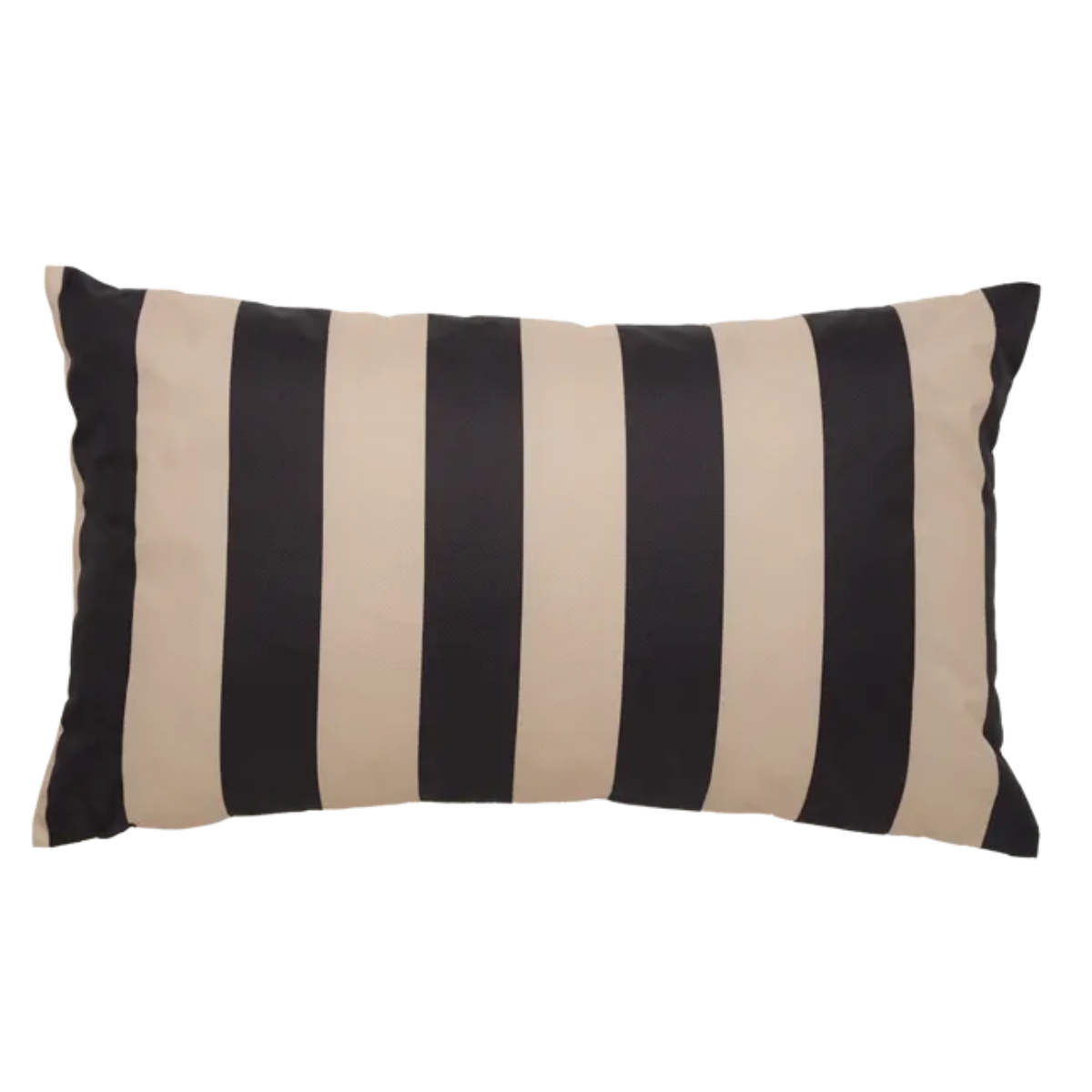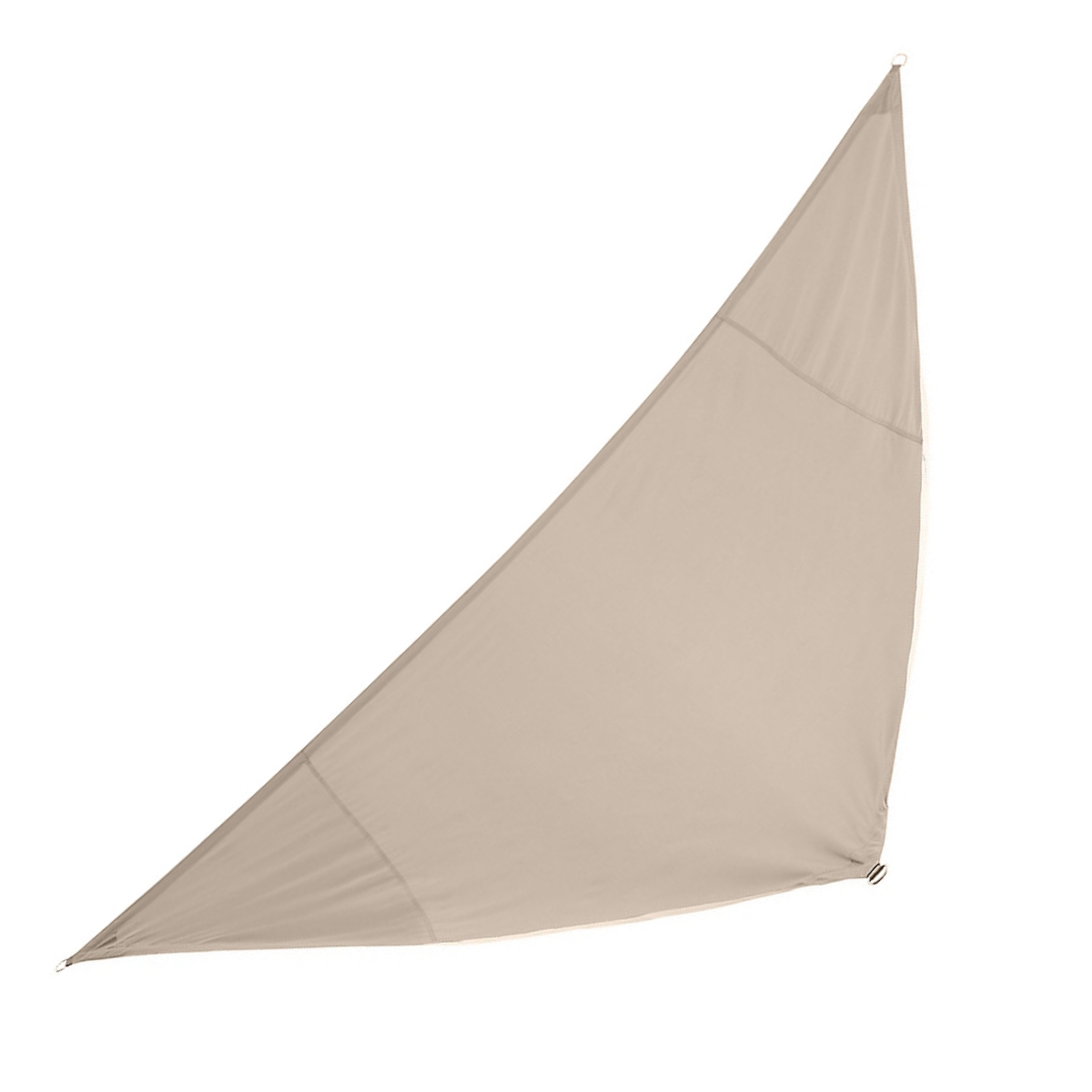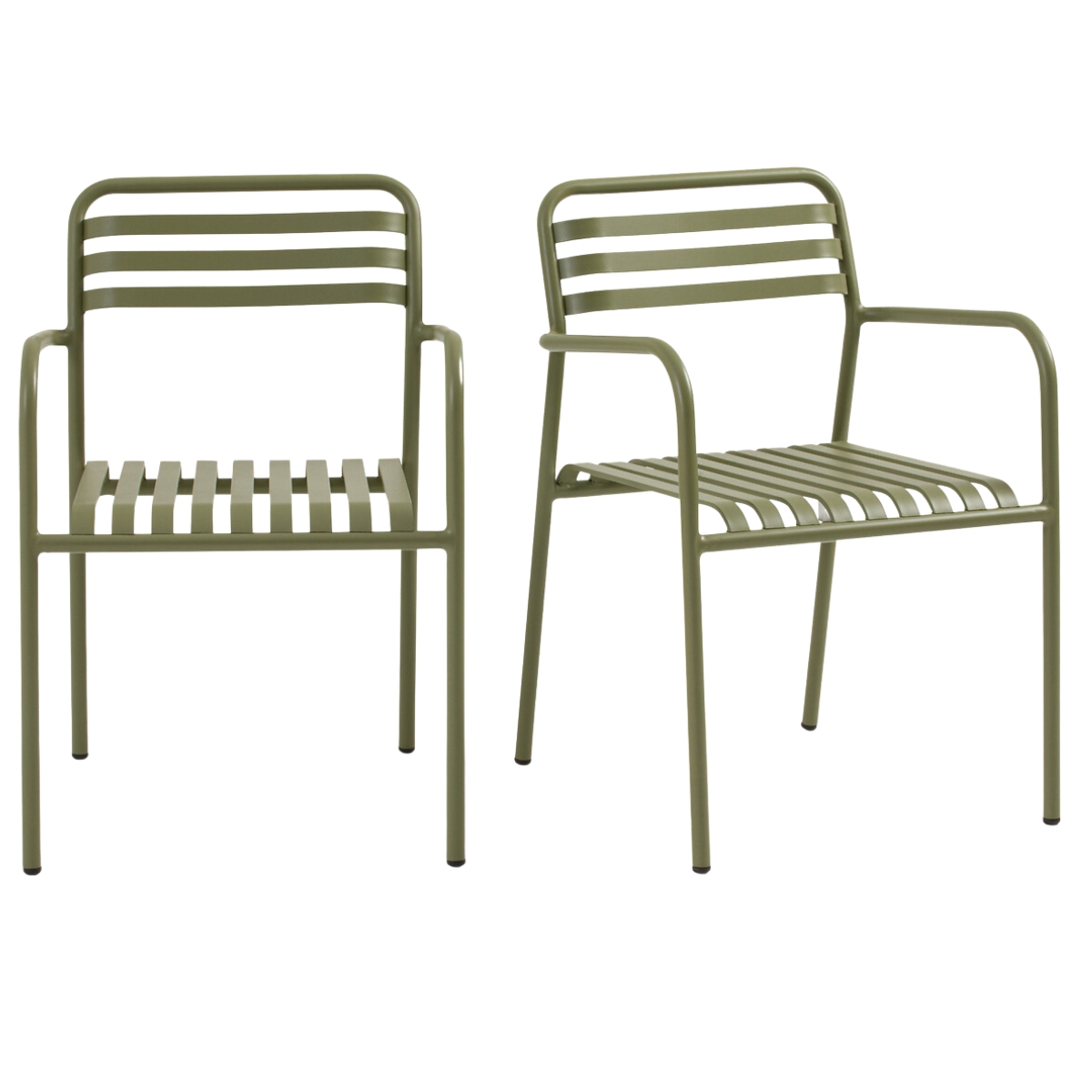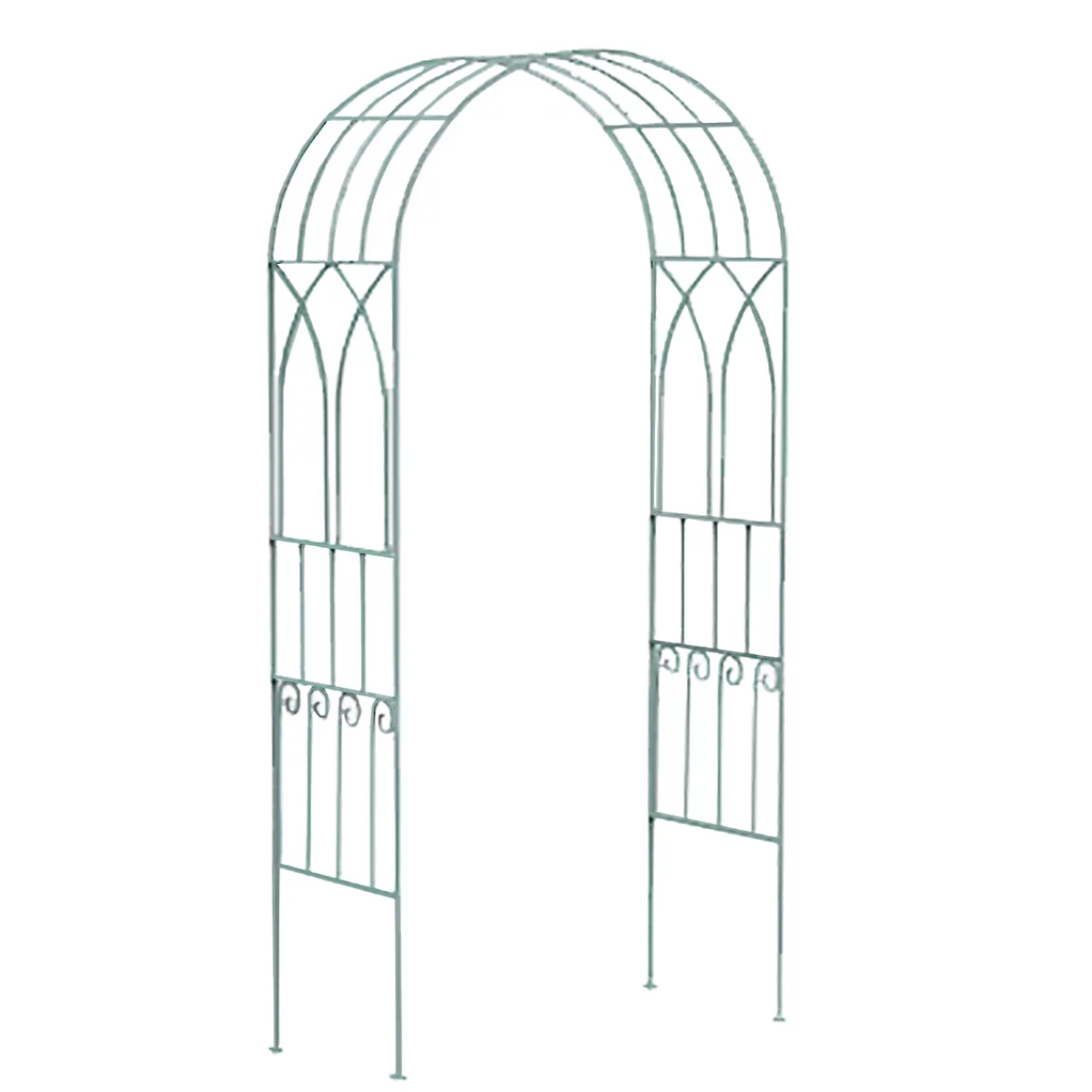8 Garden Canopy Ideas to Create Shelter for Your Outside Space in Style
Enjoy your outdoor space for longer with these beautiful canopy ideas from garden designers and landscapers
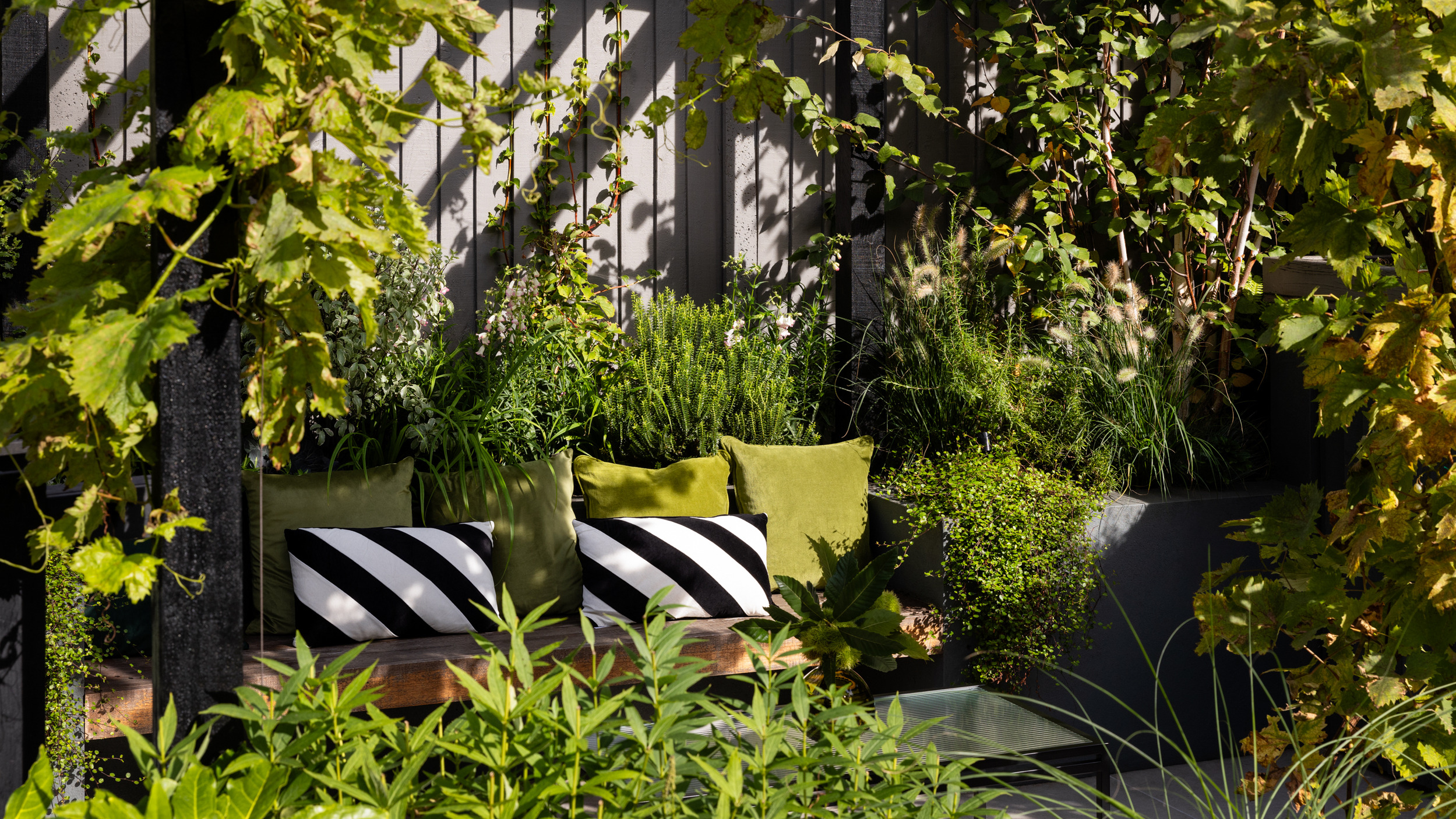
When warm, sunny days return, many of us breathe a sigh of relief. Who doesn't love the sun? Basking in its rays is one of life's simple pleasures, yet we need shade too and these garden canopy ideas will ensure you can beat a retreat yet still stay outside when the heat rises.
Whatever type of patio shade ideas you're drawn to, there are canopy styles to suit. Some canopies are permanent, while others can be removed when not required. From natural, simple, or rustic, to elegant, sophisticated, and high-tech, there are plenty of canopy solutions to choose from.
Discover the variety of different ways garden designers and landscapers create spaces for shade outside, whether you want to retreat completely under cover or relax in dappled light.
1. Cover a Pergola With Vines
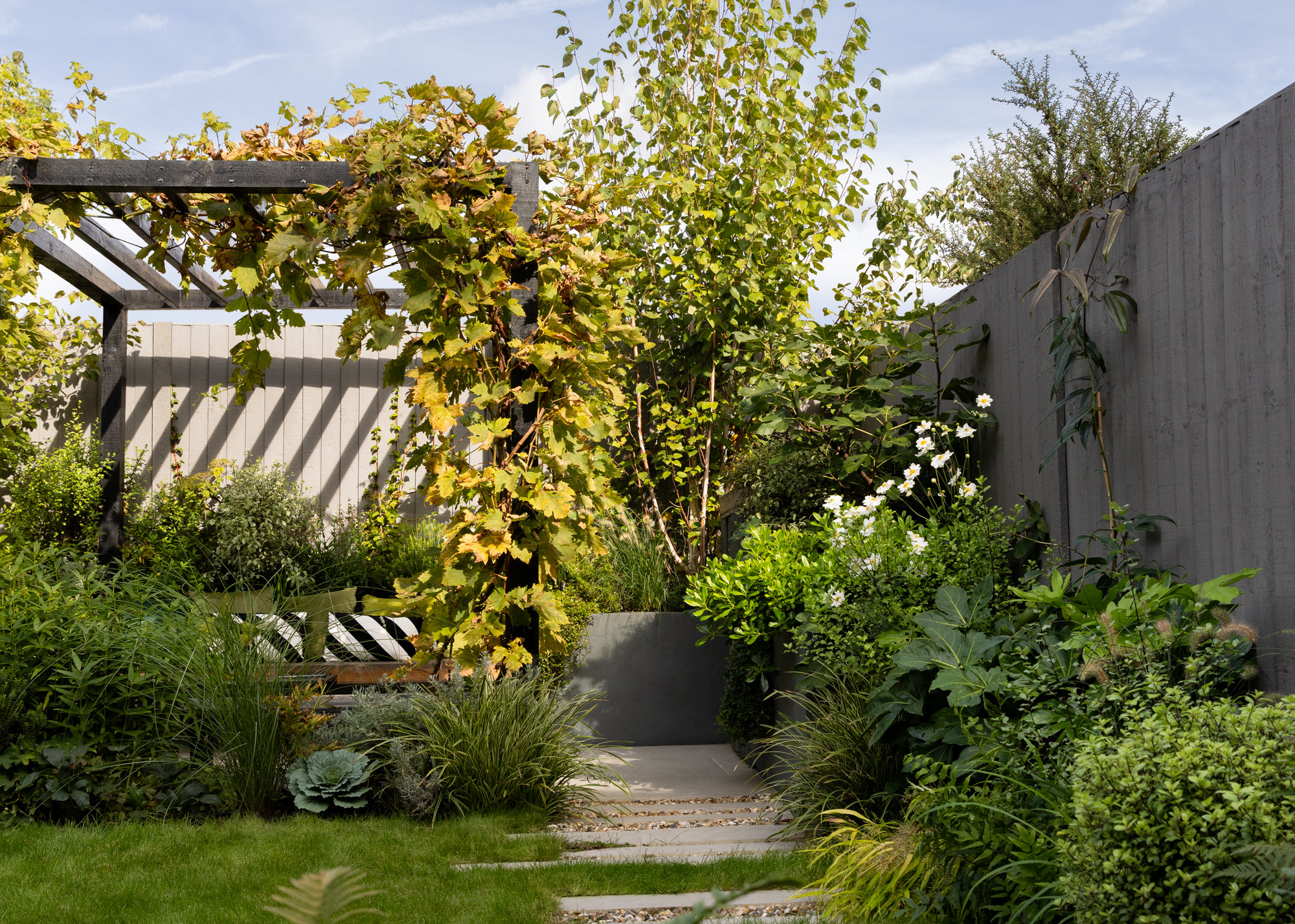
There is a lot of choice where pergola ideas are concerned, but whatever material you choose for the structure, creating shade with scented climbing plants is a beautiful way to integrate it into your garden. Dining outside under a canopy of greenery evokes relaxing vacation vibes wherever you are. With a living pergola, you can take a mini-break in your own backyard on a regular basis.
"There’s something undeniably romantic about a pergola draped in flowers and greenery," says Gina Taylor, garden designer and founder of East London Garden Design. "Choosing a sturdy structure — like weathered oak or sleek powder-coated metal — sets the stage for a show-stopping feature in your garden.
"At the base, plant fast-growing climbers such as wisteria, which will eventually produce its cascading fragrant blooms, evergreen jasmine, known for its heavenly scent, or clematis for a riot of color in countless varieties. As the seasons pass, these vines will weave themselves around the beams, forming a living roof that not only shades but also perfumes the air."
"In the evenings, add twinkling fairy lights for a soft, romantic glow. As the greenery matures, your pergola will feel like stepping into a private, natural world — perfect for alfresco dining or a lazy afternoon nap."
The Livingetc newsletters are your inside source for what’s shaping interiors now - and what’s next. Discover trend forecasts, smart style ideas, and curated shopping inspiration that brings design to life. Subscribe today and stay ahead of the curve.

Gina Taylor is the founder and lead designer of East London Garden Design, a studio specialising in contemporary urban gardens, courtyards, and rooftops. Based in East London, Gina is passionate about creating outdoor spaces that feel like a true extension of the home — places that are welcoming, personal, and connected to their surroundings.
2. Put Up a Sail Shade That Sculpts the Sky
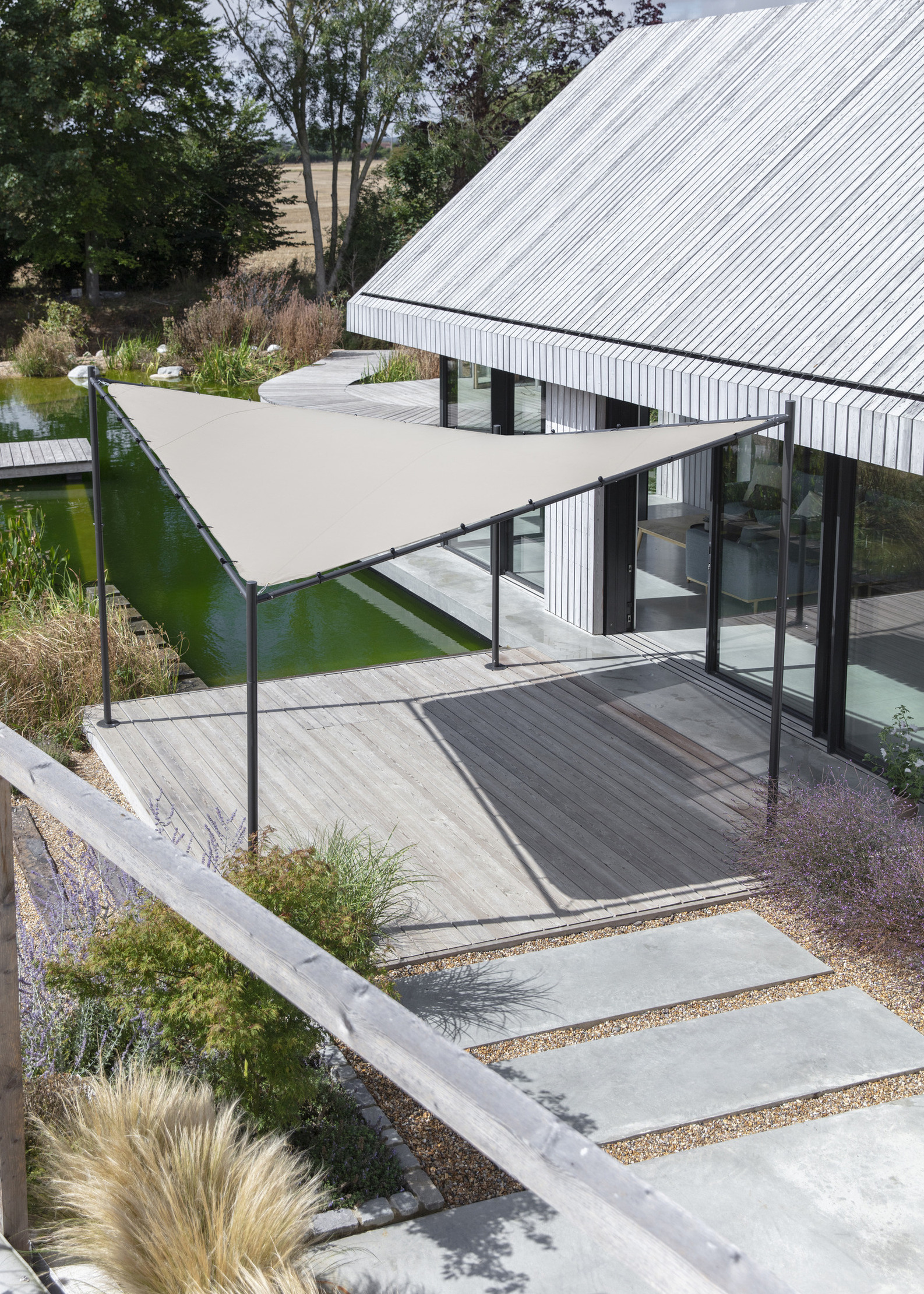
Perhaps you don't want or need a permanent canopy for your patio? In this case a sail shade makes a chic and convenient choice. The smaller sizes can be put up and taken down when it suits, such as the end of the summer, so there's no chance of casting shadow into your home or your yard on gloomy days. However, there are also larger styles that can be left up all-year round, if you prefer.
"Tensioned sail shades offer a dynamic, architectural alternative to traditional canopies," says Gina. "If your style leans more contemporary, they are a good option. These UV-resistant fabric sails can be stretched between posts, buildings, or even mature trees, creating striking angles and patterns overhead.
"Besides their visual impact, sail shades are highly practical — offering much-needed UV protection for seating areas. Their angled designs also encourage rainwater runoff, making them a smart choice.
"Play with layering multiple sails at different heights and angles to build a three-dimensional feel. Neutral tones like white, charcoal, or sand create a chic Mediterranean atmosphere, while bolder hues can inject a playful pop of color."
3. Plant Canopy-Forming Trees
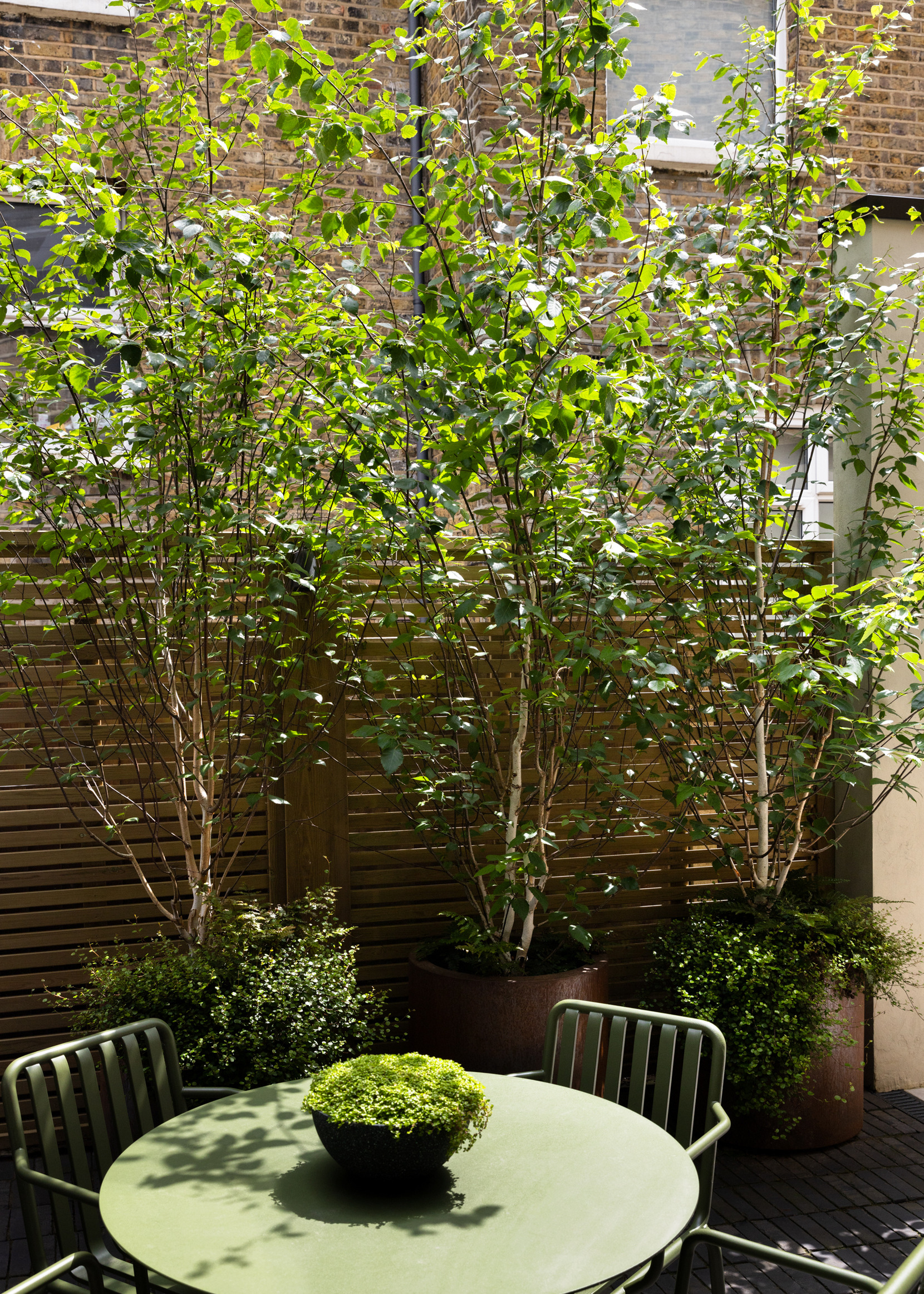
Trees are the original outdoor canopy. If your garden is not blessed with mature specimens already, consider tree landscaping ideas. By planting saplings with the future in mind, you'll eventually allow nature to create a beautiful living canopy. This will give your garden a wonderful organic, woodland feel, as well as numerous other benefits, such as a place for songbirds, improved water management, pollution absorption and much more.
"Planting small, canopy-forming trees like Amelanchier, Multistem Himalayan birch, or olive trees can deliver soft, dappled shade that feels both enchanting and effortless," says Gina. "Space your trees thoughtfully so that as they mature, their crowns just touch, creating a natural ceiling of leaves overhead.
"This gentle, filtered light transforms the atmosphere — making hot summer days feel cooler and more inviting without blocking out the sky entirely. Layer the ground beneath your canopy with shade-loving plants like ferns, hostas, and heucheras to create rich, textured underplanting.
"The contrast of lush greenery at different heights will make your space feel even more immersive and serene. Add a hammock or a cozy bench, and you’ve crafted a true secret garden escape."
4. Create a Natural Pergola With Umbrella Trees
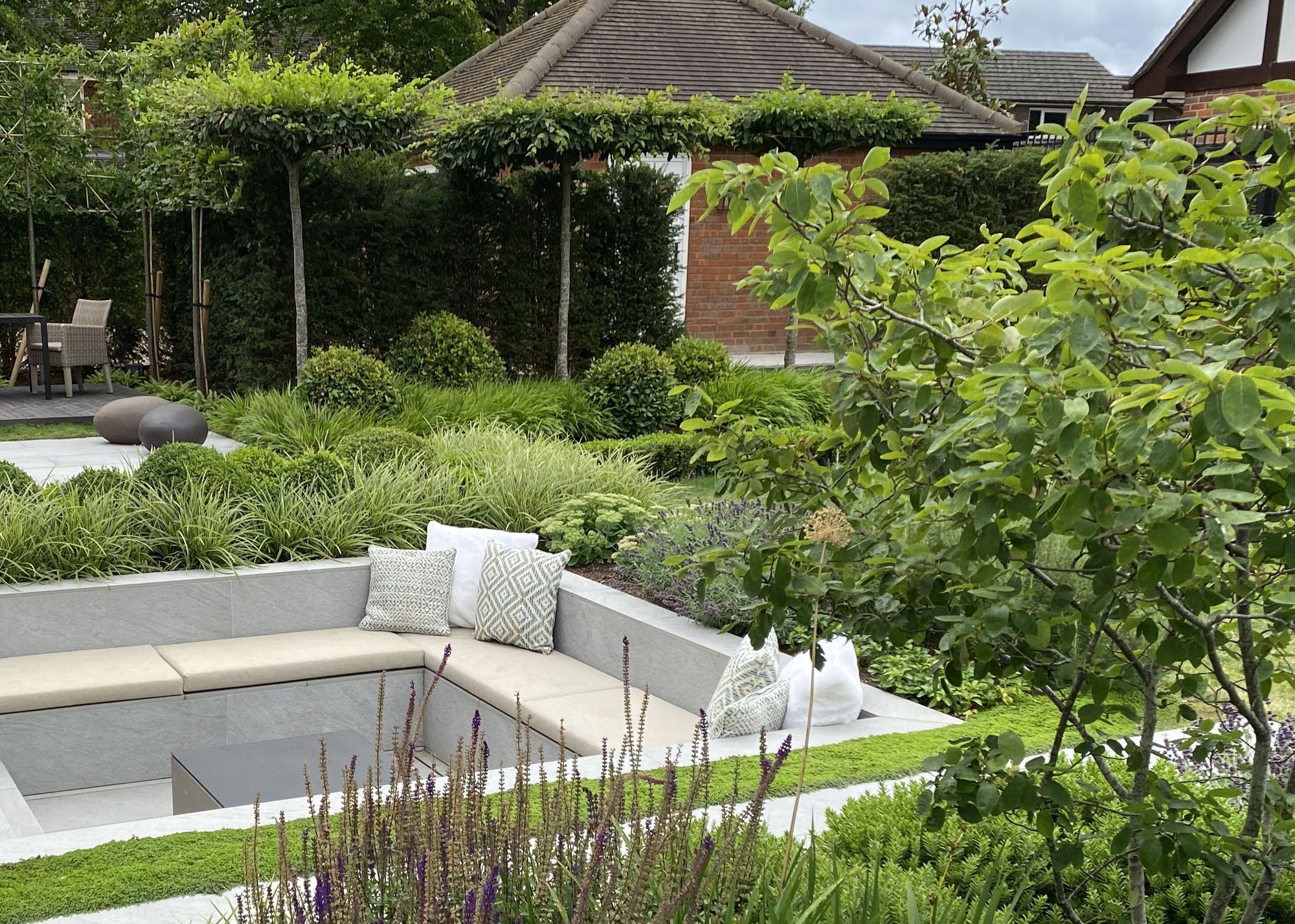
Trees are obviously beautiful in their own right, but it's possible to train certain species into umbrella-like shapes, for more natural outdoor patio shade ideas.
"It's possible to create a natural pergola, with seating underneath, using umbrella trees, also known as rooftop trees," says Manoj Malde, garden designer and author, Your Garden Room. "These trees are trained to form a flat, square canopy, giving cover from above.
"When selecting trees for your garden, check their eventual height and canopy spreads and consider how much shade they will cast. To create shade for a seating area, look at how the sun travels around your garden and position the tree where it will cast a shadow at the times when you are going to be sitting there.
"Umbrella trees can also be used to shade a patio. Perfect for small gardens, they do not take up much space and will not block the neighbour's natural light."

Manoj Malde is an award-winning garden designer, TV gardener and author of Your Outdoor Room. He is also an RHS show judge, RHS ambassador and Chelsea Flower Show medalist. Manoj is highly skilled at combining colours and textures with planting schemes and attributes his love of colour to his Indian ancestry as well as his background in the fashion industry.
5. Choose a Metal Louvre-Roofed Pergola
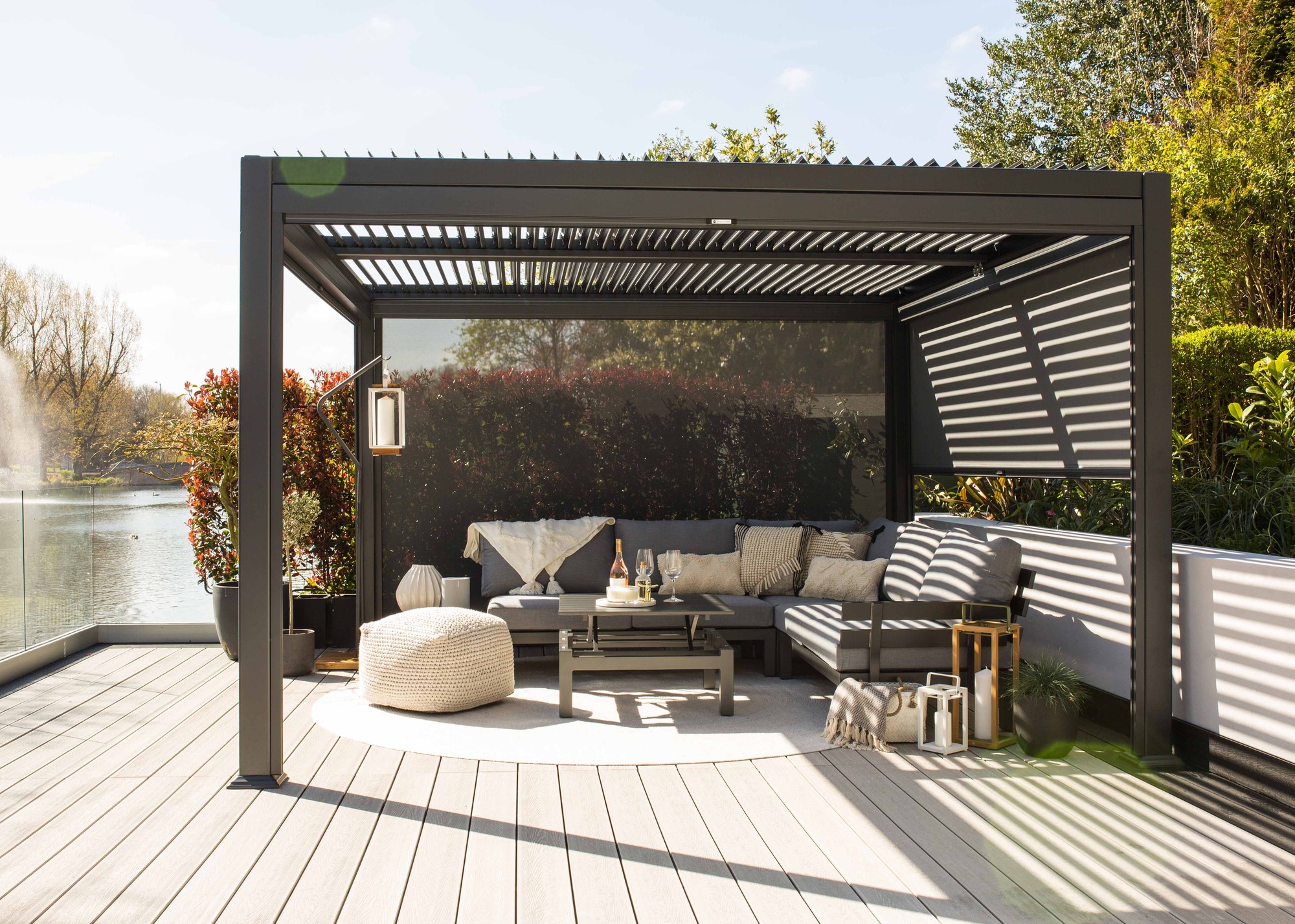
Pergola ideas come in many styles and sizes and some offer more usability than others. Those made of metal with retractable or louvred roofs and tambour-style pull down screens allow you to adjust the amount of shade according to the direction of the sun. Not only that, your outdoor plans needn't be scuppered by an unexpected rain shower, or gust of wind, as you can temporarily batten down the hatches if you need to.
"By adding a covered structure, you can prolong the time you spend outside throughout the year," says Manoj Malde. "Simply having a roof above you and the vertical posts of the structure around you, mimics sitting in a room, which helps to create a dedicated space for relaxing.
"There are some very good pergolas that can be bought off the shelf. from the powder-coated aluminium kind with louvres at the top that you can open and close, so you can still use your garden when it's drizzling, to timber structures that come as a kit."
6. Add a Covered Walkway
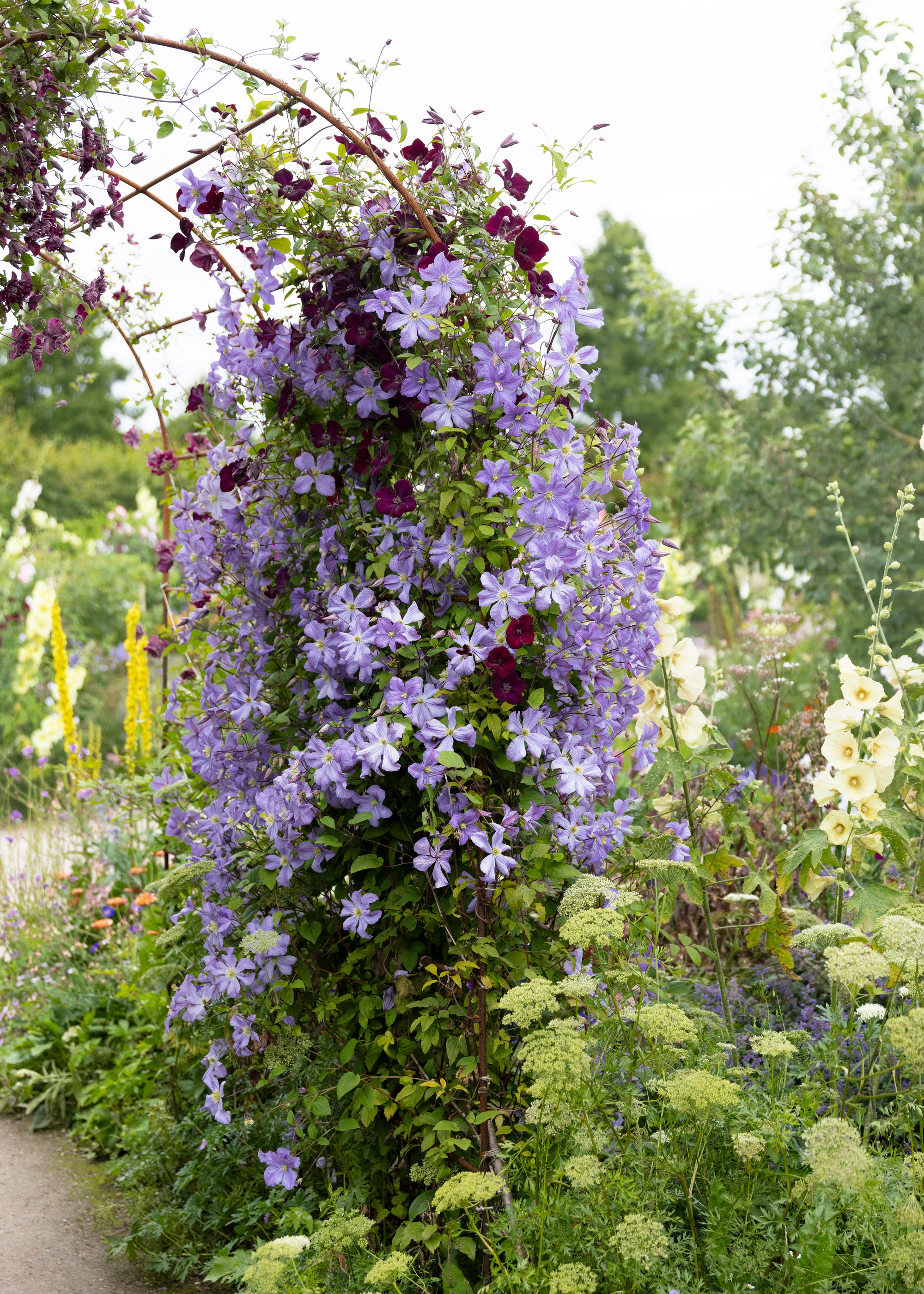
Shade isn't just required when we're lounging or dining outside. At certain times of the day, canopies can provide respite from the heat when we're moving from one part of the home or garden to another. A covered walkway is a charming way to connect inside and outside spaces or different parts of the garden.
These can be created simply with ready-made metal arches spaced apart and driven into the soil with metal spikes, with climbing plants grown over them, or built as more permanent structures.
"Covered walkways create a sophisticated transition between the home and garden, while offering continuous shade along the way," says Nina Lichtenstein, founder, Nina's Home Design. "They’re an especially beautiful solution for homes where the garden is offset from the main living spaces.
"They are most suitable for larger estates, homes with courtyard gardens and properties where the garage, guest house, or other outdoor spaces are detached.
"For a cohesive look, paint or stain the structure to complement your exterior walls. Wood and steel combinations are particularly striking, for example, a white-painted wood structure with black steel supports for modern farmhouse properties.
"Play with details like lattice sides or subtle lighting integrated into the structure for both beauty and functionality."

Nina Lichtenstein is the founder and principle home designer at Nina's Home Design. For close to a decade, Nina has showcased her in-depth construction and design expertise on projects spanning the North East, where she is known for serene palettes, diverse textures, and elegant blends of stone, wood, and other natural materials.
7. Install a Wooden Gazebo
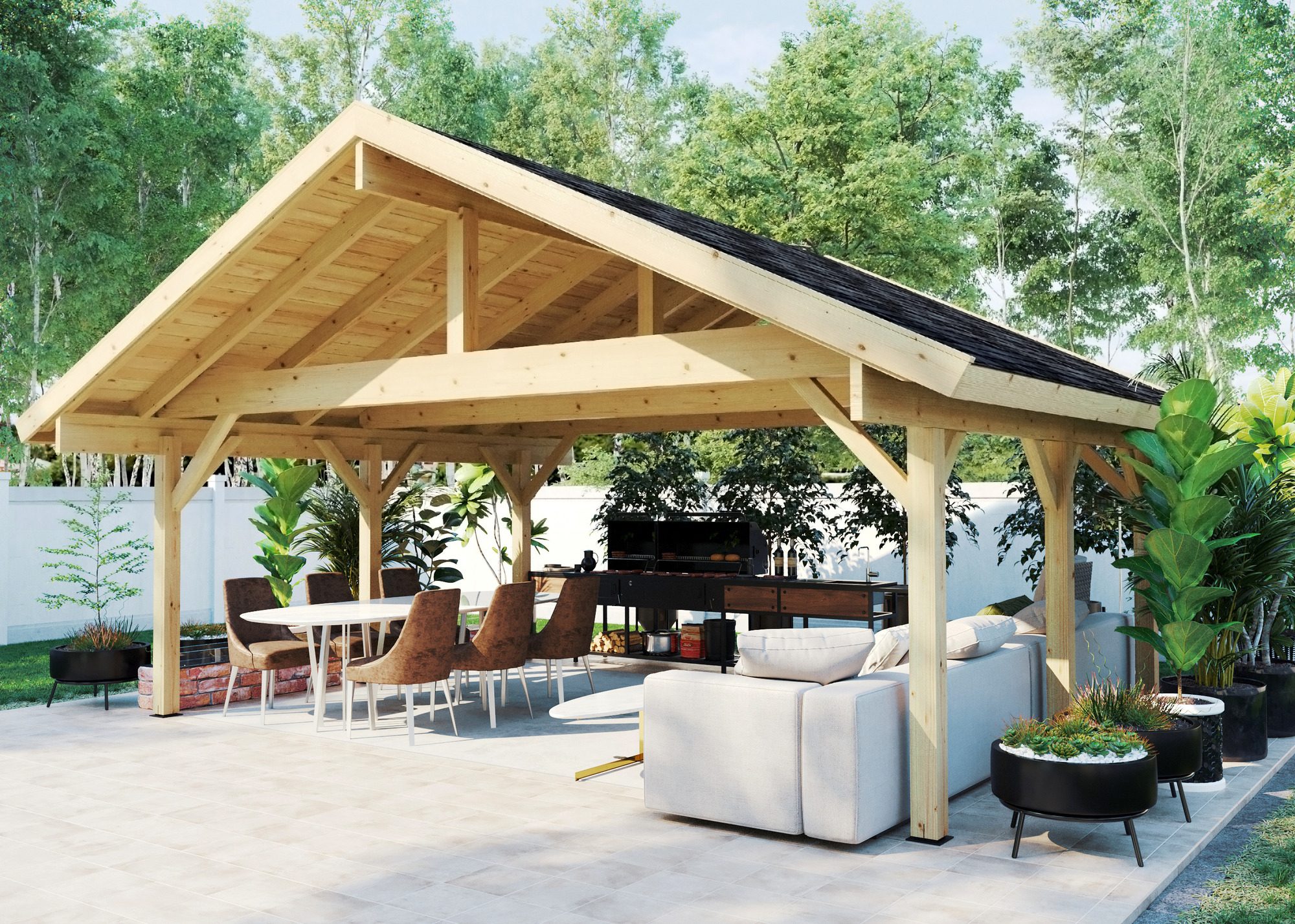
There is an option that sits between a garden summerhouse and a pergola, which is a wooden gazebo. Resembling an open-sided garden room, these sturdy structures tend to have pitched roofs and are a popular choice over outdoor kitchens and dining areas, as they offer some protection from the elements, whilst enabling you to entertain in your garden.
"A freestanding or attached structure with a pitched roof brings instant architectural interest and creates a sense of permanence and place," says Nina. "It provides strong protection from sun and rain while framing the garden beautifully.
"These are particularly good for homes with strong architectural detailing (e.g., farmhouse, traditional, rustic, or even modern minimal) and outdoor dining rooms or living spaces.
"Ideally match or complement your home’s exterior palette. Crisp white beams or soft muted greens can blend into garden settings, while natural woods like cedar or cypress warm up the look.
"Opt for standing seam metal roofs for a modern feel, or shingle roofing for classic charm. Tailor trim and post designs to mirror your home’s style: square posts for contemporary spaces; more detailed columns for traditional homes."
8. Opt for a Fabric Canopy
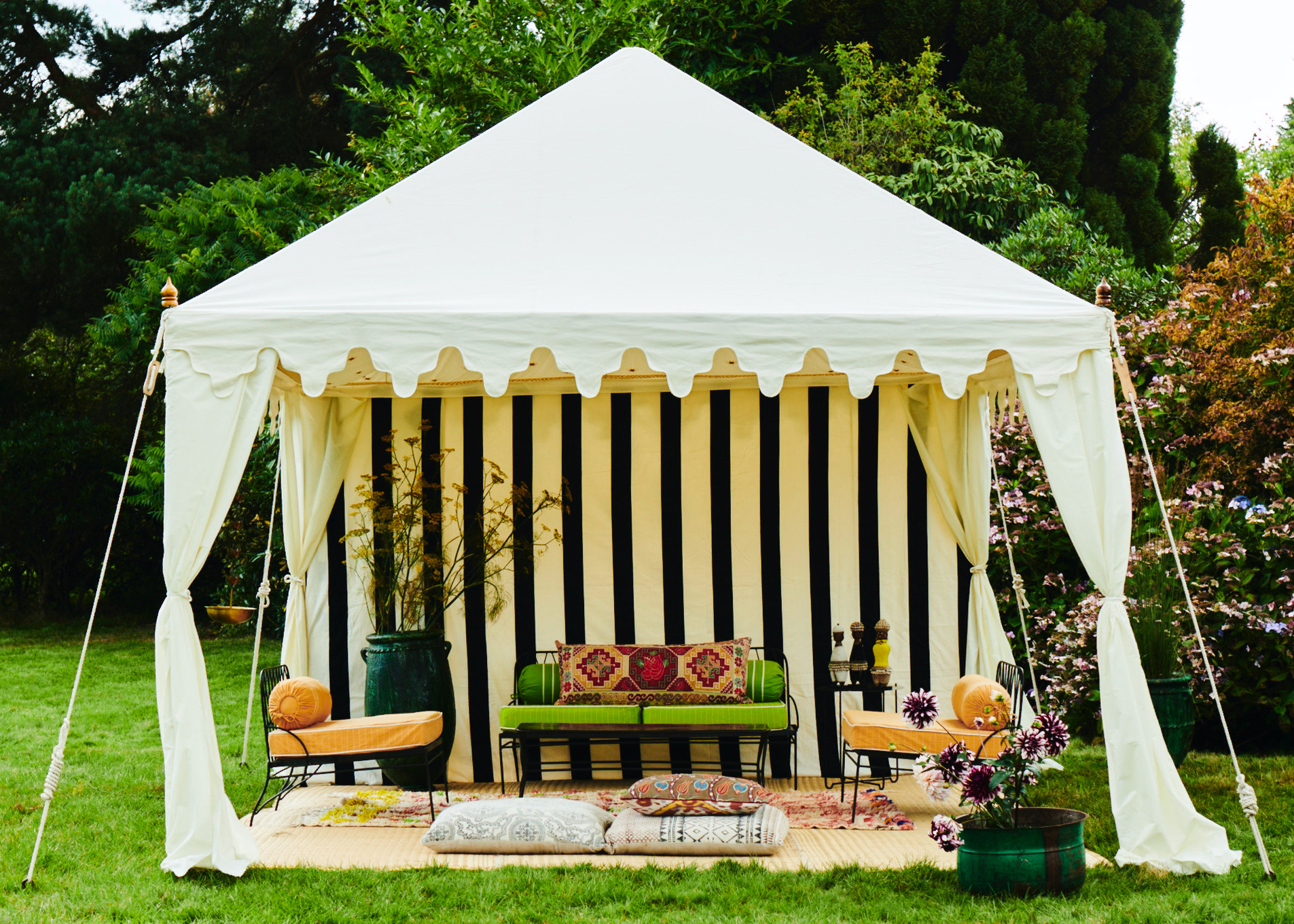
Fabric canopies are available in various shapes and sizes, from those pulled taught on a metal frame to others that resemble mini-marquees. The latter are a chic option if you're planning a weekend gathering, while the former offer a longer-lasting solution.
"Tensioned fabric canopies offer the elegance of sail shades but with a more structured, tailored silhouette," explains Nina. "They feel refined, architectural, and can be customized to fit almost any space perfectly.
"They work really well for contemporary or minimalist homes, urban gardens and outdoor kitchens or lounges. Stick to neutral tones or soft grays to maintain an upscale look or go bold with deep navy or olive green for a statement.
"Waterproof, UV-stable fabrics are a must for longevity and beauty. Keep the framework as clean-lined and minimal as possible, allowing the fabric and form to shine.
"Adding a canopy to your garden space isn’t just about blocking the sun. It’s about creating inviting, intentional spaces where life can unfold beautifully outdoors."
FAQs
What Is the Difference Between a Canopy and an Awning?
Firstly, both canopies and awnings offer shade from the sun, or rain, however an awning is fixed to a building (often above a door frame or window) and is retractable, so it can be extended when you want protection from the elements and retracted, with the fabric folded back, when you don't.
Canopies tend to sit on frames, or posts, which support the fabric roof, and they are usually freestanding, rather than secured to a wall, like an awning.
Some of these garden canopy ideas will require more planning and patience than others. Obviously, if you require immediate shade in your yard there are plenty of beautiful patio umbrellas and garden parasols on the market. Opting for a short-term option, while you plan longer term solutions may be the best way to go.
"Whether you lean towards traditional, modern, or romantic, one of these stylish canopy solutions can turn a simple garden into a true extension of home," says Nina.
Jacky Parker is a freelance lifestyle journalist and writer, producing a wide range of features for magazines and digital platforms. She has written for Livingetc and its sister titles, Homes & Gardens and Country Homes & Interiors for more than 15 years, both as a freelance contributor and as Acting Digital Editor and Acting Style Content Editor, regularly reporting on the latest interiors, gardens and wellness inspiration, speaking to experts in their respective fields, and discovering the best tips.
Jacky has also written for other publications, including Sunday Times Style, The Telegraph, Architectural Digest, House Beautiful, ELLE Decoration, Red, Grand Designs and more.
